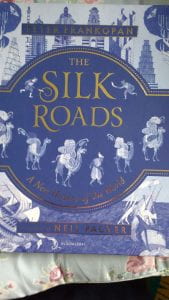Several years ago I became aware of a few books where colour was very much the central theme of the story. It was used as a way of interpreting emotion as well as being the way that people can ‘see’ music. Unfortunately I did not make a note of these titles (a lesson that I have hopefully learnt from). Over the last year or so I have found quite a few of this type of book and decided that the only way to remember them is to write a post and let everyone else know that they are out there. I would also be grateful for any other suggestions about titles that I can add to my list.
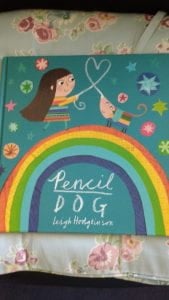
Simon & Schuster, 9781471169397
“Pencil Dog” by Leigh Hodgkinson is one of those books that really touches the heart. On the surface it is about a young girl and her pencil, or do we mean her dog? They share lots of adventures and we see how drawing helps expand the girl’s imagination, but also about the friendship between the two characters. We all know that pencils get smaller the more they are used and of course we reach that moment when pencil disappears and the girl is left alone. However we also see that memory is a wonderful thing and that pencil dog will never truly disappear. This book really work on several levels; from imagination and storytelling, to dealing with grief but above all it is a story about love and friendship.
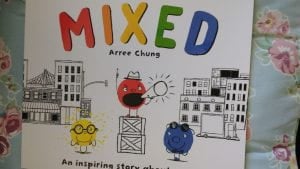
Macmillan, 9781509871346
“Mixed” by Arree Chung is a delightfully simple but very effective way of looking at the world we live in today. It is about equality and friendship; understanding that we all have our place in the world and that no one is better than those around them. The story starts with the three prime colours red, yellow and blue living in harmony, until one of the reds decides that they are better than the others. This leads to segregation but eventually a yellow and blue fall in love and get married; they then have a baby called green. Thankfully this leads the others to realize the possibilities and eventually a multi-coloured society is created. The story works at several levels and can be about modern society, but it can also be used to explain the way that colours are created in art and how this reflects the reality of the natural world.
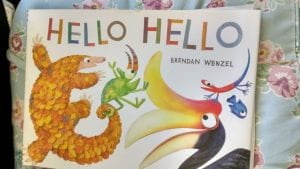
Chronicle, 9781452150147
“Hello, Hello” by Brendan Wenzel looks at the wide variation in visual experience that we see when we look at wildlife around us. It begins with animals that are black and white and then moves on to a range of colours, patterns, shapes and sizes. The animals are wonderful and although some of them are commonly found, others are threatened or endangered species. Because of this the books acts as an introduction to the ecology of our world and hopefully will spark an interest in young people. This is a great book to read with the very young and with small groups of pre-school children.
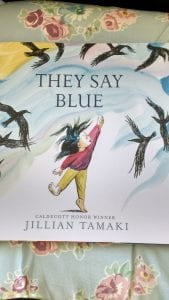
Abrams, 9781419728518
“They say Blue” by Jillian Tamaki is a magical tale of looking at the world and seeing the beauty that surrounds us. Colour is used as a way of adding feeling to the way that a young girl reacts to the world around her. The is a sense of magic and mystery about the world which makes you want to understand the changes that we see throughout the year.
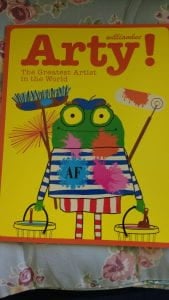
Pavilion, 9781843653950
“Arty, the greatest artist in the world” by William Bee is a whimsical and quirky look at how Arty (a frog) became the greatest artist in the world. However I think that many readers will feel that they can achieve the same results without resorting to the totally mad experiences that Arty has to undertake. This funny story definitely seems to poke gentle fun at the art world, but I am sure that we can take away the message that with a lot of hard work we can all become artists. It also shows that art is all a matter of taste.
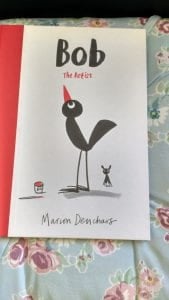
Laurence King, 9781780677712
“Bob the artist” by Marion Deuchars brings us the story of Bob, a bird who is being teased by others because of his very thin legs. He tries various solutions like exercise, eating and wearing clothes, but nothing works; but when he visits an art gallery he is inspired by the works of the modern artists that he sees. Bob decides to ignore his legs and every day he paints his beak in a different style. The other birds think this is fantastic and Bob gains in confidence, even keeping to his natural red beak on occasions; he becomes happy with his own looks. The very sparse colour palette really highlights the small areas of modern design and allows the colours used there to really sing out.
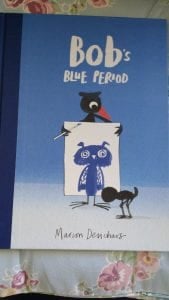
Laurence King, 9781786270696
“Bob’s blue period” by Marion Deuchars follows Bob after his friend Bat has to go away for a while. Bob finds it very difficult without his best friend and no longer feels the same about his paintings. In fact every painting seems to be blue, which all of his other friends are worried by, but they don’t know how to try and make him feel better. One evening they take him for a walk up a hill and he sees a wonderful technicolor sunset, something that reminds him that the world is full of colour. the following day he gets a post card to say that Bat is coming home, after hibernating for the winter. The celebration takes the form of a party for all their friends.
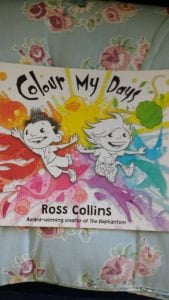
Barrington Stoke, 9781781126943
“Colour my days” by Ross Collins takes us on an energetic journey through the rainbow and how colour can make us feel. When their world is black and white Emmy and Jeff feel dull and bored, but each colour adds a lively element to the way they feel. Everything is OK when they just have one colour per day, but at the end of the week all the colours come out to play and it becomes overwhelming, so they are shown the door. Thankfully Emmy and Jeff can have a quiet and relaxing weekend. This is a brilliant way of showing how colour an affect our mood and the importance that it plays in our lives, both at home and definitely at school. I wonder if they have ever considered this when choosing the colours for school uniforms?
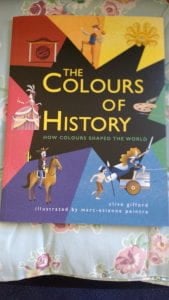
QED, 9781784939670
“The colours of history” by Clive Gifford and Marc-Etienne Peintre is a fascinating information book about the differing versions of colours and their importance throughout history. The author is one of the best known and widely regarded writers of non-fiction and this is a very different look at major periods in history. He looks at reds, yellows, purples, blues and greens and explains how some of the shades were created and how important items such as saffron, lapiz lazuli, indigo and purple were in society. The illustrations for this book are sophisticated and beautiful; they compliment the text and add so much to the feel of the book.

Andersen Press, 978-1842707319
“Elmer” by David McKee is probably the epitome of a book about colour. The story of this beloved patchwork elephant has been with us for a quarter of a century and he still has a profound effect on his young readers. It is all about being different and being accepted for who you are and that is a message that has lost none of its importance over the years. I have always loved telling these stories in schools and libraries and the children have great fun in creating their own versions of Elmer and his friends.

HarperCollins, 978-0007513765
“The day the Crayons quit” by Drew Daywalt and Oliver Jeffers has become something of a modern classic. It tells the story of Duncan and how he copes when all of his crayons send him letters complaining about the way that he uses them. It is a fascinating look at how we see different types of colour, or people and what impact that has on their self esteem. This book, together with its follow on “The day the crayons came home” has become something of a must read for young readers.

Red Fox, 978-0099266594
“My many coloured days” by Dr Seuss, Steve Johnson and Lou Fancher is not a title by this prolific author that I had come across. So of course I just had to order it. It is unusual in that it was not illustrated by Dr Seuss and was not published immediately it was written; in fact it took 20 years for the right illustrators to come along. This is a book about feelings, moods and emotions and how colour can reflect these, both in humans and in the natural world around us.

Candlewick Press, 978-0763623456
“Sky Color” by Peter H Reynolds is part of a series of picture books that look at art and whether we should be put off by the comments of those around us. This particular book is the final part of the ‘Creatrilogy’ (consisting of “Dot” and “Ish”)and is about Marisol and how she finds inspiration when asked to paint a mural for the school wall. The art is very reminiscent of Quentin Blake, with some beautiful line work, but the fact that the story is told in a series of small images brings it close to feeling like a graphic/comic book. The colour palette is extremely limited, mainly line drawings with some shading, but it brings a lot of feeling to the story and helps us focus on the activities as they unfold.

Chronicle, 978-1452141213
“Golden Domes and Silver lanterns” by Hena Khan and Mehrdokht Amini was a book that I came across completely by chance. It is a beautifully illustrated look at various colours and how they relate to various aspects of the moslem faith. It gives the appearance of being set in the USA, based of scenes in the street and other characters in the pictures, but it the focus is on the important aspects of dress, the mosque and especially writing text from the Koran. This makes for a very simple and yet positive introduction to the ways that other people might have questions about and would be good to use in a primary school or nursery.
I hope that I will keep on finding more titles that fit within this category as it works so well with people of all ages and can often act as a spark to ignite their own creativity. Please let me know if you can think of some other amazing stories.

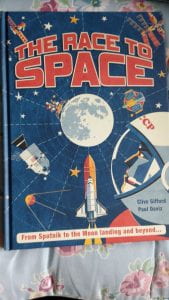

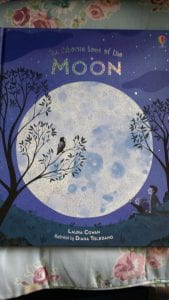
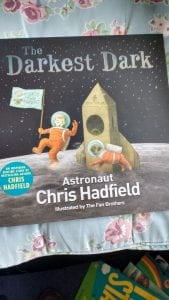
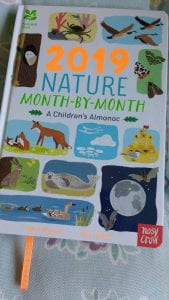
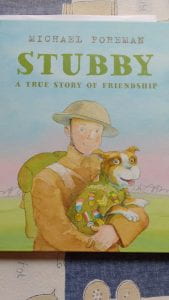

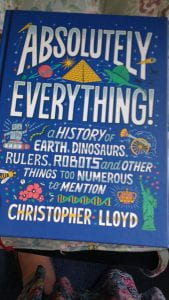
 told introduction to the life of Mary Shelley (as she became) and how she came to write one of the most enduring stories in English Literature. The illustrations are a tour de force by Julia Sarda and the sophisticated and highly stylized images really bring the text to life. This would make a really good introduction to the young reader who is about to read the story itself; it also works as a good basis for learning about ‘Gothic tales’ and their popularity at the beginning of the 19th Century.
told introduction to the life of Mary Shelley (as she became) and how she came to write one of the most enduring stories in English Literature. The illustrations are a tour de force by Julia Sarda and the sophisticated and highly stylized images really bring the text to life. This would make a really good introduction to the young reader who is about to read the story itself; it also works as a good basis for learning about ‘Gothic tales’ and their popularity at the beginning of the 19th Century.